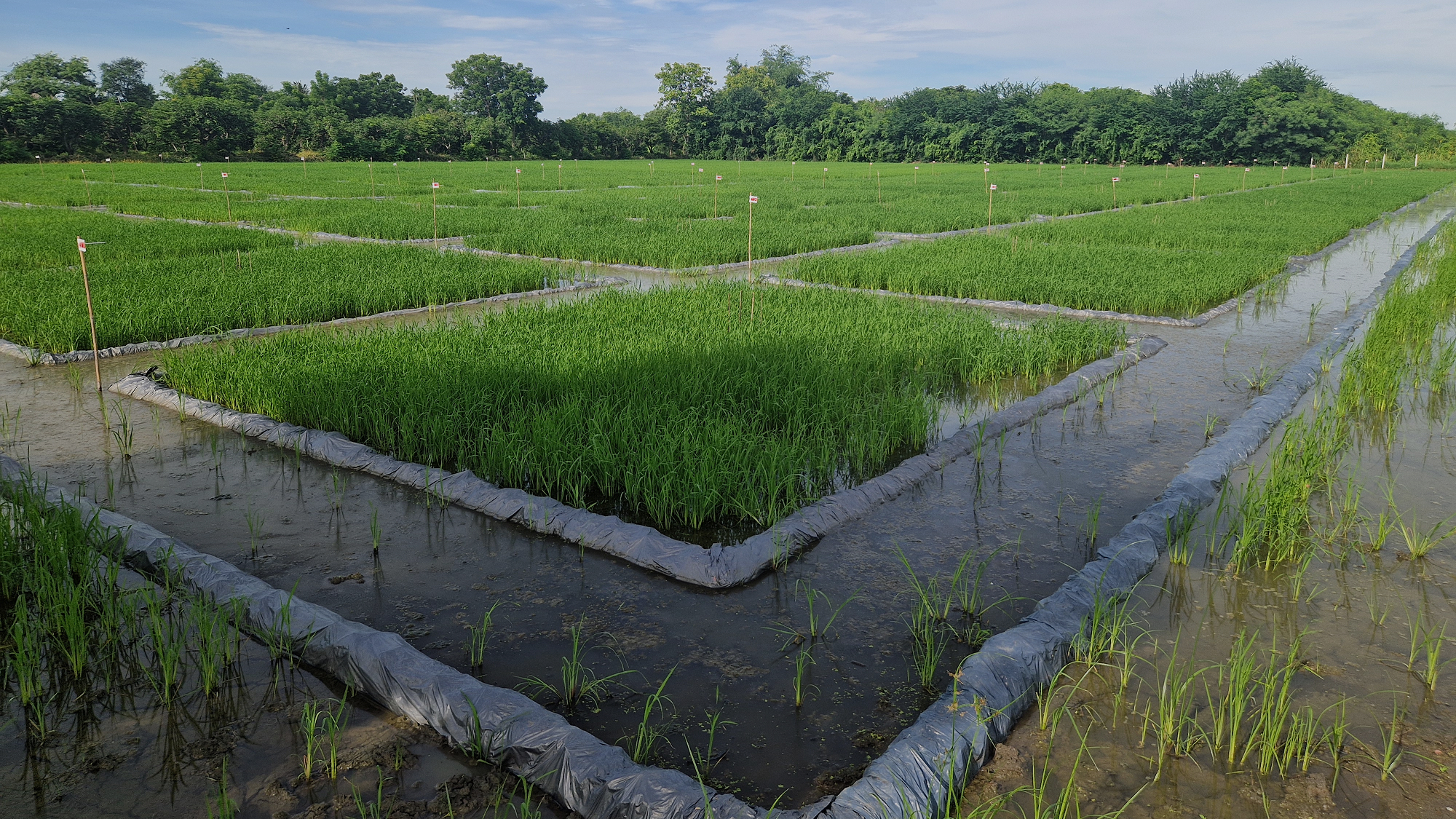Why we invested in NZN

A new frontier for biofertilisers: how microbes could hold the key to painlessly decarbonising European agriculture
A few years ago, most people had never heard of the gut microbiome. Today, there’s a growing awareness around the importance of eating a variety of plants and avoiding ultra-processed foods.
But what about the soil in which those plants were grown?
Across Europe, soil microbiomes are in a dire state – the result of excessive use of synthetic nitrogen-based fertilisers and pesticides, and poor soil structure caused by tilling and soil compaction. Excessive use of agrochemicals alters soil pH levels and degrades soil health, and it’s a vicious cycle.
The more depleted the soil quality, the less soil can hold nutrients, and the more fertilisers farmers have to use to attain the same yields. This increase in fertiliser inefficiency and nitrogen use a) raises nitrogen dioxide (NO₂) emissions – a greenhouse gas nearly 300 times more potent than CO2, and b) leads to nutrient run-off, contaminating water bodies and even causing health issues like "blue baby syndrome" due to elevated nitrate levels in drinking water.
Why this is an urgent problem to solve
Today, the traditional nitrogen-based synthetic fertiliser sector is a bigger carbon emitter than aviation. The widespread Haber-Bosch process was invented over a century ago, helping millions avoid famine by creating ammonia from fresh air. The process still feeds 48% of the world’s population, but it has a devastating climate impact. The Haber-Bosch process alone produces around 483Mt of CO2, and the application of nitrogen fertilisers is responsible for even more GHG emissions with 829Mt of CO2e coming from direct nitrous oxide (N2O) emission acidification of the soil or decomposition of urea emitting CO2 (Source).
It is essential that we start introducing less destructive biofertiliser alternatives alongside the Haber Bosch process, and increase the efficiency of nitrogen use, or we will not decarbonise agricultural processes in time to hit our climate goals. Think of it like the renewable energy transition: right now, we’re not eliminating oil and gas, we’re phasing it out.
Transitioning away from nitrogen-based synthetic fertilisers will boost European resilience
There is also a European resilience element here. Most of the ammonia Europe uses in fertilisers comes from Russia,, and given the current geopolitical climate it is essential that we diversify our fertiliser sources to ensure our food sovereignty - all without compromising crop yields, or making farming more expensive.
Whilst some startups are exploring more sustainable and local ways to produce ammonia, including electrochemical methods and gathering urea for processing into fertilisers, these solutions only address part of the problem. In our view, it would not be enough to merely transition to producing our own ammonia to overcome the resilience issue. It would be expensive and pose logistical challenges, and it would not solve the huge problem of application-related CO2 and NO2 emissions.
This is where the latest biofertiliser innovations come in.
Biofertiliser breakthroughs in Europe and the US - mapped and explained
Biofertilisers are natural formulations containing living microorganisms that enhance plant growth by improving the availability of essential nutrients. These include nitrogen-fixing, phosphate-solubilising, and potassium-solubilising bacteria, which boost nutrient uptake, promote higher crop yields, and improve plant resilience.
One important type of biofertiliser is nitrogen fixing organisms. These microbes either live inside plants’ roots (the rhizosphere), or in the ground as free living bacteria, where they capture nitrogen from air and make it available for crops.
Biofertilisers improve nutrient uptake and soil health and, unlike synthetic fertilisers, they don’t require fossil fuels for production or emit greenhouse gases during application. Combining them with regenerative agriculture practices has the potential to heal soil microbiomes while simultaneously reducing emissions (Source 1, Source 2). Trials have even shown that biofertiliser-treated crops can better withstand drought and heat, which means biofertilisers could also help grow food as the effects of the climate crisis take hold around the world.
At World Fund, we have extensively researched the latest biofertiliser innovations and have been struck by the quality and depth of innovation in Europe in this space.
Several companies, including Symborg (acquired by Corteva Agriscience in 2023), have developed microbe-based products that can be sprayed directly into soil, therefore reducing the need for nitrogen-based fertilisers.
Soil type varies highly in different regions, so finding a scalable solution has proven tricky until very recently. However, in the US, PivotBio and SwitchBio have created highly-effective genetically modified microbes that are applicable across many soil types. For example, PivotBio’s Proven™, consists of engineered bacteria that fix atmospheric nitrogen and deliver high yields.
However, this approach will not work in Europe as our regulations do not allow genetic modification of microbes. Furthermore, at World Fund we believe such soil-based solutions/free living bacteria are limited as they are more susceptible to a) soil variability and b) disturbances such as extreme weather events, which can wash microbes from the soil. Plus, soil-based biofertilisers cannot be used in heavy industrial farming as their microbes are affected by tilling. Finally, the nitrogen use efficiency of this kind of solution is lower than alternatives that work in close symbiosis with the host plant as the nitrogen produced by freeliving bacteria can be washed out.
Where NZN comes in
For all these reasons, we think the solution lies more in endophytic bacteria that work closely with the host plant.
Such bacteria can “crawl” beneath the plant’s skin to fix nitrogen directly. Discovering this was possible surprised us, because co-evolution in different plants is extremely rare.
The challenge in the symbiosis is twofold. Firstly, the plant needs to protect the nitrogenase complex, which is the “ammonium production factory”, from the oxygen. This is a challenge as the bacteria also needs oxygen for the oxidation of sugars and thus its metabolism. Secondly, for symbiosis, the plants need to exchange an energy source (i.e. sugar) with bacteria. Rhizobia are efficient, but can only work in symbiosis with legumes.
The co-evolution of microbes indicates that biofertilisers have the potential to work across a broader range of crops than previously thought. And the transition has already started: the companies mentioned in this piece are delivering reductions of anywhere from 10-50% of use in nitrogen fertiliser in trials, and are working closely with farmers to facilitate easy adoption.
The leading company in this space is NZN – the exciting and innovative company we are proud to be supporting through a $6.6 million Seed Round. NZN is a sector leader because it faces no regulatory barriers to immediate adoption, and it has a powerful founding team with the perfect combination of scientific and entrepreneurial expertise to succeed.
Field trials have shown that a single application of NZN’s product to rice seeds per season can significantly reduce farmers' use of synthetic nitrogen fertiliser (SNF), increase yields, and improve crop visual quality. Notably, it is also easy to apply and does not require any new farm machinery, allowing farmers to cut costs while decarbonising processes – a “green discount”. This is exactly the type of investment opportunity we look for at World Fund, and I am excited to work with the company’s co-founders, Gary Devine (CSO), Alan Burbidge (Head of Corp Affairs) and Justin Hughes (CEO) as they scale.
The company is already experiencing clear market traction, with multiple proof-of-concept trials conducted in several ASEAN countries and written expression of interest from a major Asian agri-input distributor. The team will now use their fresh capital to make key hires in ASEAN markets, pass certification, and finalise commercial offtake and biomanufacturing agreements.
Novel biofertilisers can help usher in a new, sustainable farming future
The biofertiliser space and more specifically, nitrogen-fixing bacteria, is a huge market with massive potential. The biofertiliser space was valued at approximately $2.3 billion in 2023 and is projected to reach over $4.7 billion by 2032 – we are finally entering an era where we recognise the part microbes can play in plant growth and recovering soil health.
Like the energy transition, the process of biofertiliser adoption will be gradual, and that’s okay. It will require collaboration between agritech companies and farmers, input from investors like us, and buy-in from large agricultural companies. We also strongly believe that biofertiliser practices and technologies should also be heavily incentivised by government policies to support farmers in making the transition.
We are still in the early stages, but in the future we can use biofertilisers to help our soils fully recover, make our food production more resilient to geopolitical shifts and climate change, and help decarbonise the agricultural sector. These tiny organisms can contribute towards creating a more sustainable global food system - if we let them.
If you have any questions or you’re a founder operating in this space, please get in touch with Nadine at nadine@worldfund.vc.
---
About Nadine Geiser, Principal, World Fund
Dr. Nadine Geiser holds a PhD in Biotechnology from ETH Zurich and has led on several food, agriculture and land use investments for World Fund, including fermentation leader, Farmless. She previously closed deals at venture firms including M Ventures, Bank Vontobel, Redalpine, and sits on the advisory board of the Bioinnovation Institute - Novo Nordisk Foundation.


.svg)
.svg)







.svg)




